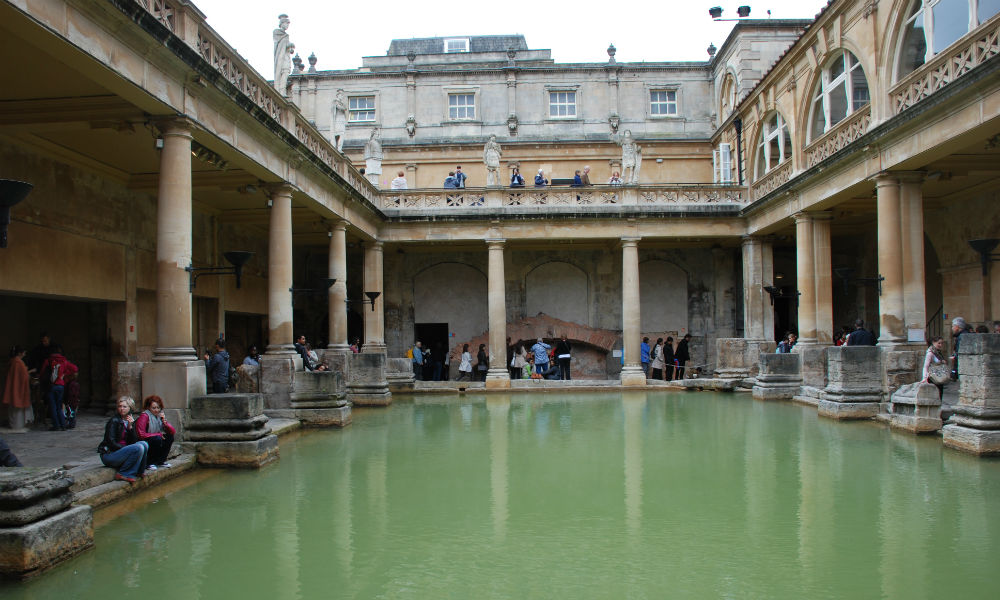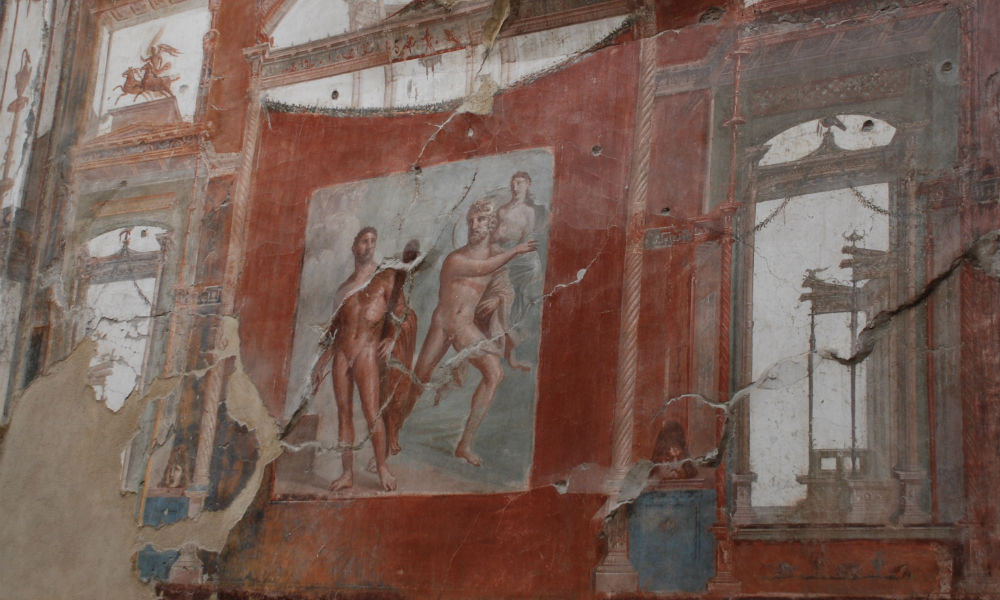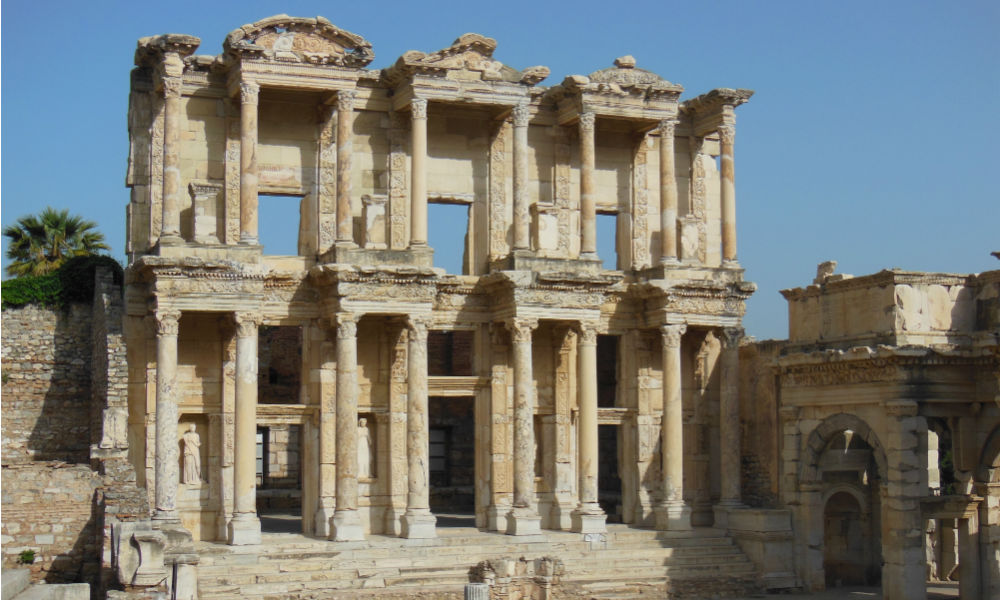While divisive political issues may have caused the Roman Empire to crumble centuries ago, modern day travelers can still find the remains of their magnificent structures. One doesn’t have to be an architectural design maven to appreciate what the Romans contributed to western civilization. Major sites throughout Europe and the Middle East (which you can get to with some last minute flight deals) showcase the remnants of Roman ancient cities while smaller sites offer an assortment of structures and artifacts.
At the larger sites, be prepared to walk through cobbled streets lined with towering columns and arched entryways that lead into temples, theaters, private homes, and public baths. Don’t forget to scout out the Roman aqueduct systems that still intrigue modern engineers.
To start you on your Roman Empire adventure, plan an excursion to one of these four popular archaeological sites while touring the nearby cities.
The Roman Baths — Bath, England

Image via Sandra Bornstein
With a day to spare while visiting London, take an early morning train ride to Bath, England. To avoid long lines, go directly to the Roman Baths as close as possible to their opening time of 9 am. Most will be content with an audio guide that gives background information to the exhibits on the two levels. Look for the sacred spring, the Roman Temple, the bathhouse, and artifacts. After exploring for a couple of hours, visitors can enjoy the rest of Bath’s attractions and restaurants before taking an evening train back to London.
Feel like taking an adventure? Find some last minute flight deals and take off!
Herculaneum and Pompeii — Near Naples, Italy

Image via Sandra Bornstein
While the city of Rome offers numerous places to view Roman architecture, we recommend going to Naples to see Herculaneum and Pompeii. Many experts consider Pompeii to be the best-preserved example of a Roman city prior to the first century C.E. Plan in advance the length of your stay and possibly arrange for a guide because one could easily wander around for hours. Add Herculaneum to your itinerary for a double dose of Roman architecture or to encounter fewer crowds. While Herculaneum may be smaller and less famous than Pompeii, the Herculaneum structures are more intact and easier to visualize. Herculaneum offers visible accouterments of wealth — decorative mosaics, elaborately decorated wall frescoes, marble accessories, and intricately carved statues.
Ephesus — Near Kusadasi, Turkey

Image via Sandra Bornstein
Ephesus is about 30 kilometers away from Kusadasi, Turkey. It was the capital and largest port city of the Roman Province of Asia during the Roman and Hellenistic periods. Stone walkways and wide boulevards connect the notable buildings such as the Basilica Stoa, the Temple of Hadrian, the Celsus Library, and the Great Theatre. Cat lovers will be quite surprised by the impressive number of stray cats that gracefully pose on the ruins.
You may also like: Six of the Most Romantic Places in Italy
Caesarea National Park — Near Haifa, Israel

More than 2,000 years ago, Herod the Great dedicated Caesarea to Caesar Augustus. Back then, Caesarea was the administrative center of the Province of Judea in the Roman Empire. Make sure you visit the amphitheater. It’s the oldest surviving Roman theater in the eastern Mediterranean region. If you take time out to enjoy the beachfront, you’ll be right near a raised aqueduct, a trademark of the Roman Empire. Useful tip: If you don’t like crowds, avoid the summer months. And, don’t forget to bring water!
FAQs:
Q: How were the plaster casts in Pompeii created?
A: The plaster casts were made by pouring liquid plaster into the cavities left by the decomposed bodies of victims, creating eerie yet poignant statues that capture the final moments of those caught in the eruption.
Q: Are the Colosseum and the Roman Forum within walking distance in Rome?
A: Yes, the Colosseum and the Roman Forum are conveniently located close to each other, allowing visitors to explore both iconic sites on foot.
Q: What is the significance of the Library of Celsus in Ephesus?
A: The Library of Celsus served as a repository of knowledge and a mausoleum for Gaius Julius Celsus Polemaeanus, showcasing the importance of intellectual pursuits in ancient society.
Q: Can visitors enter the ancient structures in Jerash?
A: Absolutely, visitors are welcome to explore and even walk through many of the ancient structures in Jerash, providing an immersive experience of Roman architecture and urban life.
Q: Is there an entrance fee to these archaeological sites?
A: Yes, these sites usually have an entrance fee that contributes to their preservation and maintenance. However, the experience of stepping into history is well worth the cost.
Q: Are guided tours available at these destinations?
A: Yes, guided tours are available at most of these sites, offering insightful commentary and a deeper understanding of the historical context.
Have you ever visited these Roman ruins? Tell us about it in the comments below!








